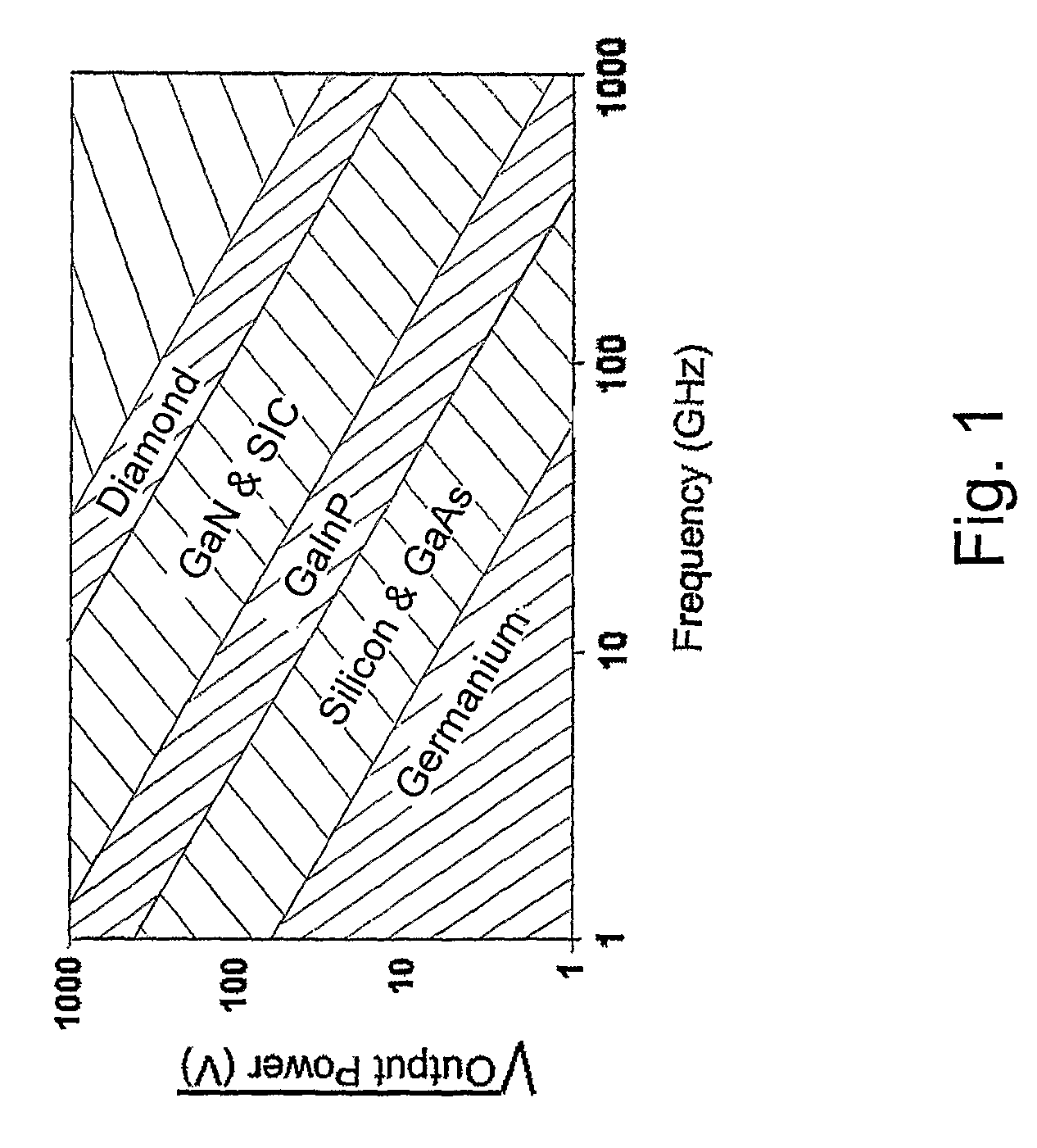Diamond transistor and method of manufacture thereof
a transistor and diamond technology, applied in the field of transistors, can solve the problems of rsub>q /sub> or rsub>q
- Summary
- Abstract
- Description
- Claims
- Application Information
AI Technical Summary
Benefits of technology
Problems solved by technology
Method used
Image
Examples
example
[0216]A specific example of a MESFET that has been fabricated together with its expected performance is given below. This example is intended to be non-limiting.
[0217]The design of the device is very similar to that of the SC CVD Transistor 1 shown in FIG. 3, as this is the simplest of the devices proposed by the applicant.
[0218]An HPHT substrate 1 with major faces (001) was carefully prepared by scaif polishing along one of the directions lying in the plane of the substrate and an RA value, measured using an atomic force microscope, of less than 0.3 nm was achieved. This surface roughness was achieved over areas of greater 50 μm×50 μm, more than large enough for fabricating single devices.
[0219]Using conditions known in the art for depositing high quality intrinsic single crystal CVD diamond (see WO 01 / 96633), a layer 11 approximately 1 μm thick was deposited on the specially prepared substrate surface. On top of the intrinsic layer 11, a high boron delta doped layer 3, approximat...
PUM
| Property | Measurement | Unit |
|---|---|---|
| root-mean-square roughness | aaaaa | aaaaa |
| root-mean-square roughness | aaaaa | aaaaa |
| root-mean-square roughness | aaaaa | aaaaa |
Abstract
Description
Claims
Application Information
 Login to View More
Login to View More - R&D
- Intellectual Property
- Life Sciences
- Materials
- Tech Scout
- Unparalleled Data Quality
- Higher Quality Content
- 60% Fewer Hallucinations
Browse by: Latest US Patents, China's latest patents, Technical Efficacy Thesaurus, Application Domain, Technology Topic, Popular Technical Reports.
© 2025 PatSnap. All rights reserved.Legal|Privacy policy|Modern Slavery Act Transparency Statement|Sitemap|About US| Contact US: help@patsnap.com



